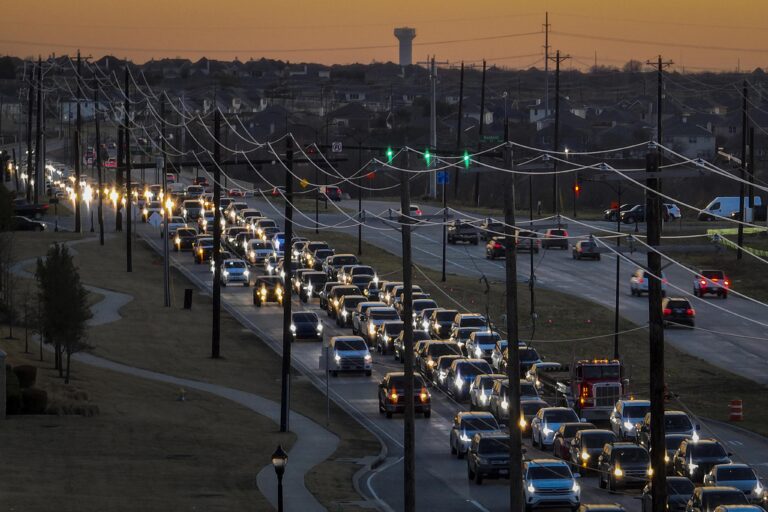Transforming Dallas Traffic: How Digital Innovation is Paving the Way for Smoother Commutes
Escalating Traffic Challenges Amid Dallas’ Rapid Urban Expansion
Dallas has witnessed explosive population growth over the past decade, placing unprecedented strain on its transportation network. Despite ongoing efforts to widen highways and enhance public transit options, the city’s infrastructure is struggling to keep pace with the swelling number of vehicles. Congestion has evolved from a predictable rush-hour nuisance into a near-constant obstacle, frustrating commuters and visitors alike. Recent studies reveal that average commute times have surged by over 50% since 2018, underscoring the urgency for innovative solutions beyond traditional road expansions.
Urban mobility experts emphasize that simply adding lanes or buses will not suffice to resolve Dallas’ gridlock. Instead, leveraging cutting-edge digital tools and internet-enabled technologies offers a transformative approach to traffic management. Some promising strategies include:
- Adaptive traffic signal systems that respond instantly to real-time congestion
- Mobile carpooling platforms that encourage ride-sharing dynamically
- Artificial intelligence-driven navigation to optimize routes and reduce bottlenecks
| Traffic Metric | 2018 | 2023 |
|---|---|---|
| Average Commute Duration (minutes) | 28 | 43 |
| Vehicles on Major Thoroughfares (millions daily) | 1.2 | 2.3 |
| Public Transit Usage (%) | 12 | 15 |
Harnessing IoT and AI: The Future of Real-Time Traffic Control in Dallas
Emerging Internet of Things (IoT) technologies are revolutionizing how Dallas can tackle its traffic woes. By embedding smart sensors, cameras, and connected devices throughout the city’s roadways, traffic systems can now collect and analyze live data to adjust signal timings and traffic flows dynamically. This shift from static to intelligent infrastructure promises to reduce idle times, lower emissions, and improve overall travel efficiency.
Key technological pillars driving this evolution include:
- AI-powered predictive analytics that forecast congestion patterns before they occur
- 5G connectivity enabling rapid communication between traffic devices and vehicles
- Cloud-based management platforms offering centralized control with localized adaptability
- Vehicle-to-Everything (V2X) communication facilitating seamless coordination between cars and traffic infrastructure
| Technology | Projected Impact | Deployment Timeline |
|---|---|---|
| Smart Signal Systems | Cut wait times by up to 30% | 2024‚Äď2025 |
| Dynamic Traffic Routing Apps | Enable real-time detours | 2023 (pilot phase) |
| Connected Vehicle Networks | Enhance road safety and coordination | 2025‚Äď2027 |
Collaborative Funding: The Role of Public-Private Partnerships in Smart Traffic Solutions
Implementing advanced traffic technologies in Dallas requires substantial investment and expertise, making public-private partnerships (PPPs) essential. These collaborations combine government oversight with private sector innovation and capital, accelerating the rollout of smart traffic systems that adapt in real time to evolving conditions. Without such alliances, the financial and technical barriers could delay or limit progress.
Benefits of these partnerships include:
- Access to cutting-edge technology and specialized knowledge
- Shared financial responsibility and risk mitigation
- Expedited project timelines and deployment
- Enhanced scalability and ongoing system maintenance
| Partner Category | Contribution | Expected Result |
|---|---|---|
| Technology Firms | Deploy sensors and software solutions | Continuous real-time data streams |
| City Agencies | Regulatory oversight and policy enforcement | Safety and compliance assurance |
| Investment Groups | Provide capital funding | Accelerated infrastructure implementation |
Engaging Dallas Residents: A Vital Step for Digital Traffic Innovation Success
For Dallas to fully benefit from digital traffic management tools, active community involvement is crucial. Engaging residents through workshops, surveys, and interactive forums ensures that solutions are tailored to the city’s diverse neighborhoods and traffic behaviors. This participatory approach fosters trust, addresses privacy concerns, and encourages widespread adoption of new technologies.
Collaboration between local officials, technology developers, and the public creates a feedback loop that allows for continuous refinement of traffic innovations without disrupting daily routines. The following table highlights various engagement initiatives and their influence on driver acceptance rates:
| Engagement Method | Main Advantage | Estimated Increase in Adoption |
|---|---|---|
| Neighborhood Workshops | Customized traffic solutions | +18% |
| Interactive Mobile Platforms | Instant user feedback | +22% |
| Targeted Social Media Outreach | Heightened public awareness | +15% |
| Pilot Testing Programs | Building user confidence | +25% |
Looking Ahead: Digital Solutions as the Cornerstone of Dallas’ Traffic Future
As Dallas confronts the mounting pressures of urban growth and traffic congestion, it is evident that conventional infrastructure upgrades alone cannot resolve the city‚Äôs mobility challenges. The integration of internet-based technologies‚ÄĒspanning from real-time data analytics to smart city frameworks‚ÄĒoffers a compelling roadmap toward more efficient, safer, and environmentally friendly commutes. While obstacles remain, embracing these digital innovations could redefine how Dallas moves, turning gridlock into a relic of the past. The coming years will reveal whether the city‚Äôs investment in technology can truly transform its transportation landscape.







